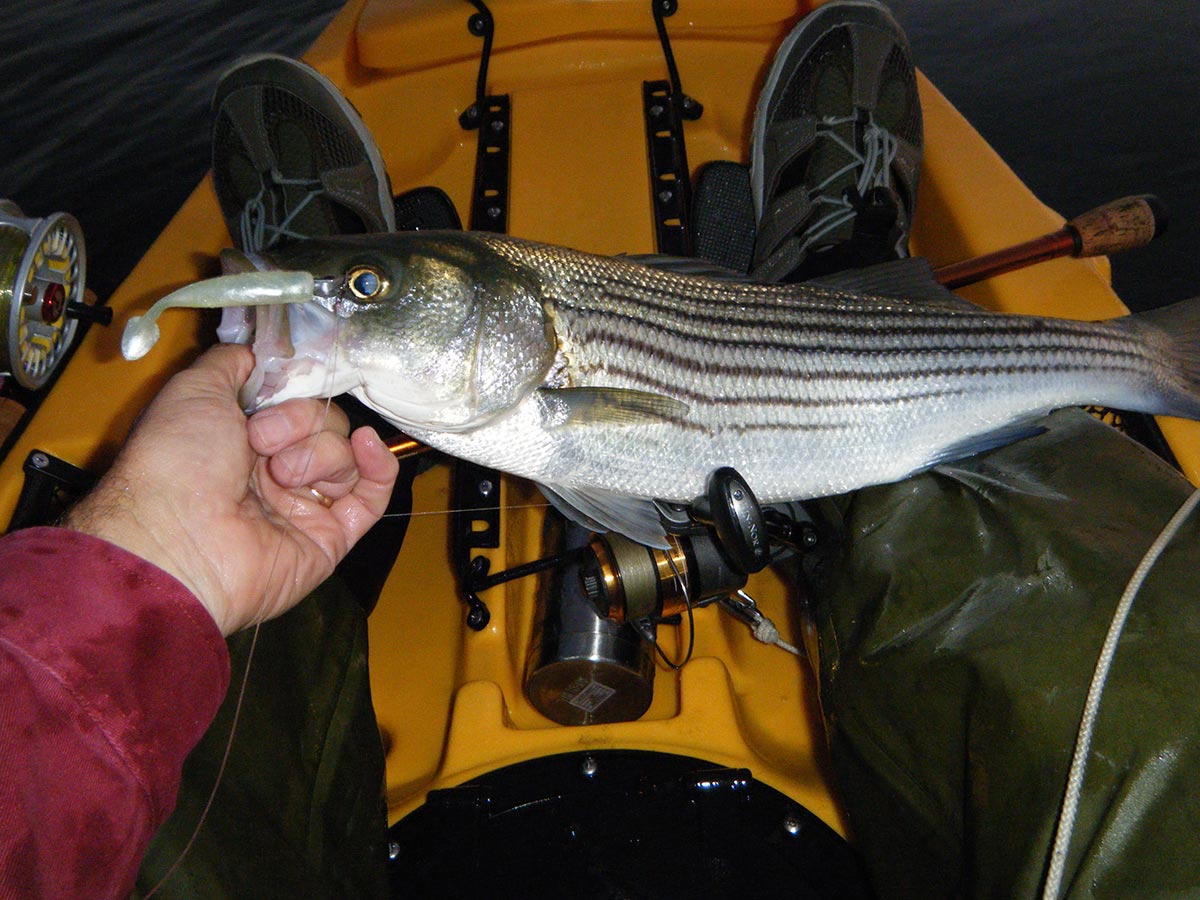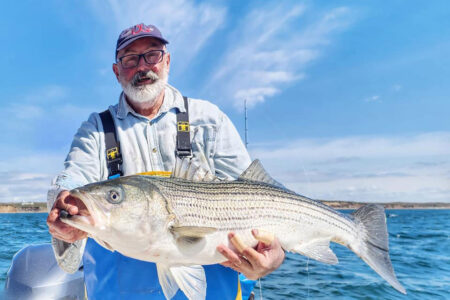Schoolies are never out on those quiet summer nights.
At sun down, summer-season stripers often go on a half-hour feeding spree then get lockjaw for the next half hour until they become accustomed to the darkness. Once they feel comfortable they’ll feed sporadically through the night, and finally end the night shift with a surge of activity before dawn, perhaps feeding continuously until sunrise.
Favorite haunts include bridges that draw bait into the shadow lines cast by the overhead lights; and lighted docks and marinas, especially those located near inlets and breachways, or wherever there are strong currents. Channel edges and drop-offs near sand bars and sandy points that jut into a bay or river, oyster bars and mussel beds that cause rips on moving tides, the mouths of canals and small tidal creeks that wash barrels of bait into the main channel, the edges of bulkheads and riprap rocks, and marsh sedges are all first-class locations that provide feeding stations for striped bass at night and before dawn. Some of these areas can only be fished by wading, others by boat, but there’s no lack of structure.
Striped bass feeding activity peaks with moving tides. Often the last half of the downside and the last half of the upside are the very best, but bass can feed at any time there is moving water. Some of the heaviest back-bay bass you’ll ever hook will be at the very last hour of the outgoing.
The full and new moon periods often cause so much tidal action that good spots near inlets actually have too much current, so focus on areas upriver or further back into the bays where the current may not be so strong. Optimum moon periods seem to be the several days just prior to and just after the full and new moons.

Favorite lures include soft plastics like swim baits, or leadheads with shad tails, curly tails and jerk tails. A “secret weapon” in back bays is a fake shrimp lure like the D.O.A., Tsunami, Live Target, Vudu and others that are deadly for school stripers if you work them real slow with gentle twitches of the rod tip. Small swimming plugs never go out of fashion and poppers are exciting to fish in the dark because bass will cartwheel, swirl and splash madly after a well-presented popper, like the Guide’s Choice Striper Slider, Tsunami Talkin’ Popper or Rapala Skitter Pop.
This is a perfect opportunity for light tackle like a Tsunami Carbon Shield rod of 7 or 7-1/2 feet matched to a 4000-size Shield spinner, or a Shimano E6X Inshore spinning rod matched to a Stradic 4000. A braided line of 12- to 20-pound test will throw all the popular lures mentioned above. About 3 feet of 25- to 30-pound test fluorocarbon will protect from chafing the leader from a striper’s raspy teeth. Although I use a non-slip loop knot almost all the time, if tying knots to change lures is a problem at night, use a small snap.
Other essential gear includes a small flashlight hung around your neck on a cord. Paint the lens red to avoid harsh glare. Also, bring a good pair of aluminum or stainless steel pliers. And bug spray; you will absolutely need it. Mosquitoes and gnats just love those summer nights when not even a gentle breeze helps to keep them away.
If you don’t feel comfortable fishing in the dark, try fishing at dusk into the dark to gain some night-shift experience. If you have not tried night fishing before, you’ll be surprised how your eyes adapt. You can see quite well, and at times even tie knots without aid of a light. Best of all, the night shift will keep you in the striper bite all summer.



